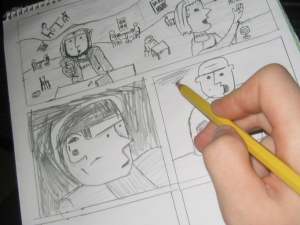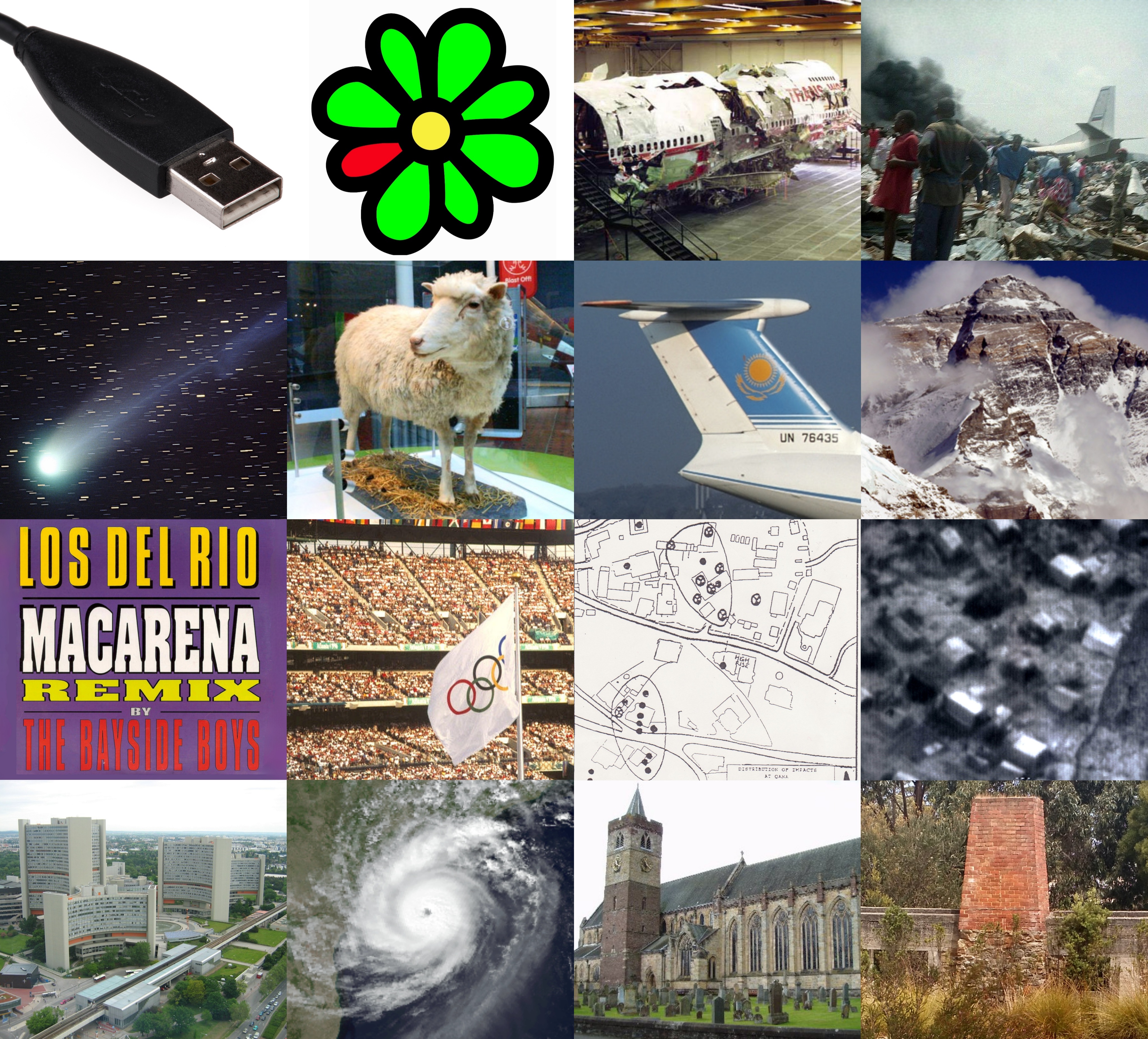|
Graphic Storytelling And Visual Narrative
''Graphic Storytelling and Visual Narrative'' is a 1996 book by American cartoonist Will Eisner that provides a formal overview of comics. It is a companion to his earlier book '' Comics and Sequential Art'' (1985). See also * Comics studies * Sequential art In comics studies, sequential art is a term proposed by comics artist Will Eisner Will Eisner, '' Comics and Sequential Art'', Poorhouse Press, 1990 (1st ed.: 1985), p. 5. to describe art forms that use images deployed in a specific order for the ... Sources 1996 non-fiction books Books about comics Books by Will Eisner {{Comics-stub ... [...More Info...] [...Related Items...] OR: [Wikipedia] [Google] [Baidu] |
Will Eisner
William Erwin Eisner ( ; March 6, 1917 – January 3, 2005) was an American cartoonist, writer, and entrepreneur. He was one of the earliest cartoonists to work in the American comic book industry, and his series '' The Spirit'' (1940–1952) was noted for its experiments in content and form. In 1978, he popularized the term "graphic novel" with the publication of his book '' A Contract with God''. He was an early contributor to formal comics studies with his book '' Comics and Sequential Art'' (1985). The Eisner Award was named in his honor and is given to recognize achievements each year in the comics medium; he was one of the three inaugural inductees to the Will Eisner Comic Book Hall of Fame. 1917–1936: Early life Family background Eisner's father, Shmuel "Samuel" Eisner, was born to Galician Jewish parents on March 6, 1886, in Kolomyia, Austria-Hungary (present-day Ukraine), and was one of eleven children. He aspired to be an artist, and as a teenager painted murals ... [...More Info...] [...Related Items...] OR: [Wikipedia] [Google] [Baidu] |
Comics
a Media (communication), medium used to express ideas with images, often combined with text or other visual information. It typically the form of a sequence of Panel (comics), panels of images. Textual devices such as speech balloons, Glossary of comics terminology#Caption, captions, and onomatopoeia can indicate dialogue, narration, sound effects, or other information. There is no consensus among theorists and historians on a definition of comics; some emphasize the combination of images and text, some sequentiality or other image relations, and others historical aspects such as mass reproduction or the use of recurring characters. Cartoonist, Cartooning and other forms of illustration are the most common means of image-making in comics. Photo comics is a form that uses photographic images. Common forms include comic strips, Political cartoon, editorial and gag cartoons, and comic books. Since the late 20th century, bound volumes such as graphic novels, and Bande dessinée ... [...More Info...] [...Related Items...] OR: [Wikipedia] [Google] [Baidu] |
North Light Books
F+W (formerly F+W Publications and F+W Media) was a media and e-commerce company headquartered in New York City. Founded in 1913 in Cincinnati, F+W published magazines, books, digital products (including e-books and e-magazines), produced online video, offered online education, and owned and operated e-stores, as well as consumer and trade shows. History F+W was named after two of its early publications: ''Farm Quarterly'' and ''Writer's Digest''. The company grew though a series of acquisitions, including book publisher David & Charles, Krause Publications in 2002, ''Horticulture'' magazine, and Adams Media in 2003. The private equity firm ABRY Partners purchased F+W in 2005. In August 2012 F+W Media acquired Interweave, an arts and crafts media company based in Loveland, Colorado. In 2014, F+W Media acquired New Track Media, renamed itself F+W, and was acquired by the private equity company Tinicum. In 2008, the company began to focus more on e-commerce activities and offering ... [...More Info...] [...Related Items...] OR: [Wikipedia] [Google] [Baidu] |
Comics And Sequential Art
''Comics and Sequential Art'' is a book by American cartoonist Will Eisner that analyzes the comics medium, published in 1985 and revised in 1990. It is based on a series of essays that appeared in ''The Spirit'' magazine, themselves based on Eisner's experience teaching a course on comics at the School of Visual Arts. It is not presented as a teaching guide, however, but as a series of demonstrations of principles and methods. A 1990 expanded edition of the book includes short sections on the print process and the use of computers in comics. Eisner followed with a companion volume, '' Graphic Storytelling and Visual Narrative'', in 1996. Content In contrast to earlier books on comics, which focused on specific aspects such as drawing anatomy, Eisner's book takes an overall approach, devoting different chapters to different aspects of comics. To demonstrate many of the concepts the book introduces, Eisner provides a ten-page adaptation of the "To be, or not to be..." soliloquy fr ... [...More Info...] [...Related Items...] OR: [Wikipedia] [Google] [Baidu] |
Comics
a Media (communication), medium used to express ideas with images, often combined with text or other visual information. It typically the form of a sequence of Panel (comics), panels of images. Textual devices such as speech balloons, Glossary of comics terminology#Caption, captions, and onomatopoeia can indicate dialogue, narration, sound effects, or other information. There is no consensus among theorists and historians on a definition of comics; some emphasize the combination of images and text, some sequentiality or other image relations, and others historical aspects such as mass reproduction or the use of recurring characters. Cartoonist, Cartooning and other forms of illustration are the most common means of image-making in comics. Photo comics is a form that uses photographic images. Common forms include comic strips, Political cartoon, editorial and gag cartoons, and comic books. Since the late 20th century, bound volumes such as graphic novels, and Bande dessinée ... [...More Info...] [...Related Items...] OR: [Wikipedia] [Google] [Baidu] |
Comics Studies
Comics studies (also comic art studies, sequential art studies or graphic narrative studies) is an academic field that focuses on comics and sequential art. Although comics and graphic novels have been generally dismissed as less relevant popular culture, pop culture Text (literary theory), texts, scholars in fields such as semiotics, aesthetics, sociology, composition studies and cultural studies are now re-considering comics and graphic novels as complex texts deserving of serious scholarly study. Not to be confused with the technical aspects of comics creation, comics studies exists only with the creation of comics theory—which approaches comics critically as an art—and the writing of comics historiography (the study of the history of comics).Benoît Crucifix"Redrawing Comics into the Graphic Novel: Comics Historiography, Canonization, and Authors' Histories of the Medium" "Whither comics studies?" panel, International conference of the French Association for American Studie ... [...More Info...] [...Related Items...] OR: [Wikipedia] [Google] [Baidu] |
Sequential Art
In comics studies, sequential art is a term proposed by comics artist Will Eisner Will Eisner, '' Comics and Sequential Art'', Poorhouse Press, 1990 (1st ed.: 1985), p. 5. to describe art forms that use images deployed in a specific order for the purpose of graphic storytellingWill Eisner, '' Graphic Storytelling and Visual Narrative'', W. W. Norton, 2008 (1st. ed.: Poorhouse Press, 1996), "Introduction: Comics as a Medium". (i.e., narration of graphic stories) or conveying information. The best-known example of sequential art is comics. Etymology The term "sequential art" was coined in 1985 by comics artist Will Eisner in his book '' Comics and Sequential Art''. Eisner analyzed this form into four elements: design, drawing, caricature, and writing. Scott McCloud, another comics artist, elaborated the explanation further, in his books ''Understanding Comics'' (1993) and '' Reinventing Comics'' (2000). In ''Understanding Comics'', he notes that the movie roll, before it is being p ... [...More Info...] [...Related Items...] OR: [Wikipedia] [Google] [Baidu] |
1996 Non-fiction Books
1996 was designated as: * International Year for the Eradication of Poverty Events January * January 8 – A Zairean cargo plane 1996 Air Africa crash, crashes into a crowded market in the center of the capital city of the Democratic Republic of the Congo, Kinshasa, killing around 300 people. * January 9–January 20, 20 – Serious fighting breaks out between Russian soldiers and rebel fighters in Chechnya. * January 11 – Ryutaro Hashimoto, leader of the Liberal Democratic Party (Japan), Liberal Democratic Party, becomes Prime Minister of Japan. * January 13 – Prime Minister of Italy, Italy's Prime Minister, Lamberto Dini, resigns after the failure of all-party talks to confirm him. New talks are initiated by President Oscar Luigi Scalfaro to form a new government. * January 14 – Jorge Sampaio is elected President of Portugal. * January 16 – President of Sierra Leone Valentine Strasser is deposed by the chief of defence, Julius Maada Bio. B ... [...More Info...] [...Related Items...] OR: [Wikipedia] [Google] [Baidu] |
Books About Comics
A book is a structured presentation of recorded information, primarily verbal and graphical, through a medium. Originally physical, electronic books and audiobooks are now existent. Physical books are objects that contain printed material, mostly of writing and images. Modern books are typically composed of many pages Bookbinding, bound together and protected by a Book cover, cover, what is known as the ''codex'' format; older formats include the scroll and the Clay tablet, tablet. As a conceptual object, a ''book'' often refers to a written work of substantial length by one or more authors, which may also be distributed digitally as an electronic book (ebook). These kinds of works can be broadly Library classification, classified into fiction (containing invented content, often narratives) and non-fiction (containing content intended as factual truth). But a physical book may not contain a written work: for example, it may contain ''only'' drawings, engravings, photographs, s ... [...More Info...] [...Related Items...] OR: [Wikipedia] [Google] [Baidu] |





